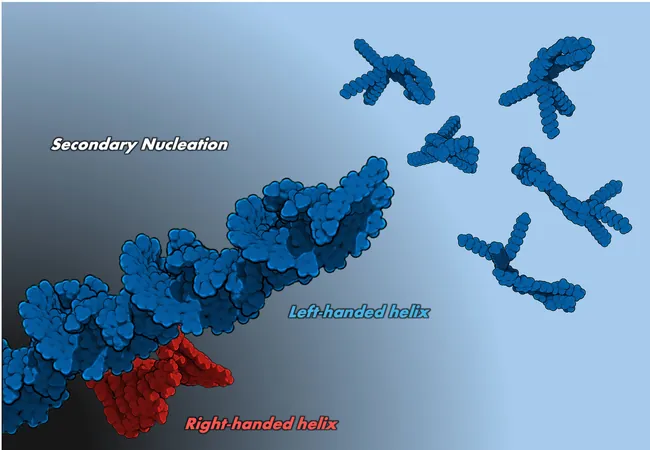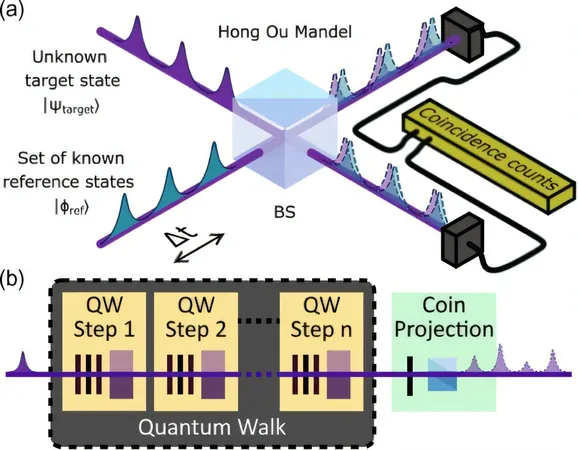
Revolutionary Light Trickery: Scientists Twist Molecular Chirality in Groundbreaking Study
2025-04-11
Author: Siti
A Groundbreaking Leap in Molecular Science
In an astonishing breakthrough, researchers in Japan have revealed an innovative technique that alters the self-assembly of molecules, a vital process in creating advanced optical and electronic materials. Led by Professor Shiki Yagai from Chiba University, this pioneering team is reshaping our understanding of how tiny molecules interact.
The Surprising Power of Residual Aggregates
Self-assembly, the natural tendency of molecules to organize into structured forms, is highly sensitive to even the most minute impurities. Professor Yagai states, "Even slight changes in conditions can drastically affect the final molecular structures." This study focuses on a chiral, photoresponsive molecule that typically forms left-handed helices, but opposite conditions can twist this norm.
Chirality Unleashed by Light
The team discovered that just a hint of residual aggregates can flip the assembly from left-handed to right-handed helices. When exposed to various light intensities, the assembly process can be precisely fine-tuned, allowing scientists to create either helical structure on demand.
How Molecules Dance to the Light's Tune
Through detailed spectroscopic analysis, it was found that the scissor-shaped azobenzene molecules form a folded structure in organic solvents that leads to helical arrangements. Notably, when these structures are exposed to UV light, they can disassemble and reassemble based on subsequent light exposure, showcasing a stunning dance of molecular transformation.
The Mechanism Behind the Magic
Interestingly, under certain conditions, exposure to weak UV light leads to the retention of some left-handed aggregates, which serve as nucleation sites, promoting the formation of their right-handed counterparts. This intriguing phenomenon, termed 'secondary nucleation', sheds light on how various light intensities can guide molecule behavior.
Optimizing Light for Precision Engineering
Adjustments in both UV and visible light intensities have proven to be critical. Stronger visible light speeds up assembly while weakening its effects. Striking the right balance allows precise control over the creation of left- and right-handed helices, offering insights into designing new functional materials in the burgeoning field of material science.
Unlocking New Possibilities in Material Science
This study not only uncovers the dynamic interactions in molecular self-assembly but also hints at a future where materials can be customized at the molecular level to achieve desired electronic properties. These insights open exciting pathways for innovation in technology and groundbreaking material applications.




 Brasil (PT)
Brasil (PT)
 Canada (EN)
Canada (EN)
 Chile (ES)
Chile (ES)
 Česko (CS)
Česko (CS)
 대한민국 (KO)
대한민국 (KO)
 España (ES)
España (ES)
 France (FR)
France (FR)
 Hong Kong (EN)
Hong Kong (EN)
 Italia (IT)
Italia (IT)
 日本 (JA)
日本 (JA)
 Magyarország (HU)
Magyarország (HU)
 Norge (NO)
Norge (NO)
 Polska (PL)
Polska (PL)
 Schweiz (DE)
Schweiz (DE)
 Singapore (EN)
Singapore (EN)
 Sverige (SV)
Sverige (SV)
 Suomi (FI)
Suomi (FI)
 Türkiye (TR)
Türkiye (TR)
 الإمارات العربية المتحدة (AR)
الإمارات العربية المتحدة (AR)